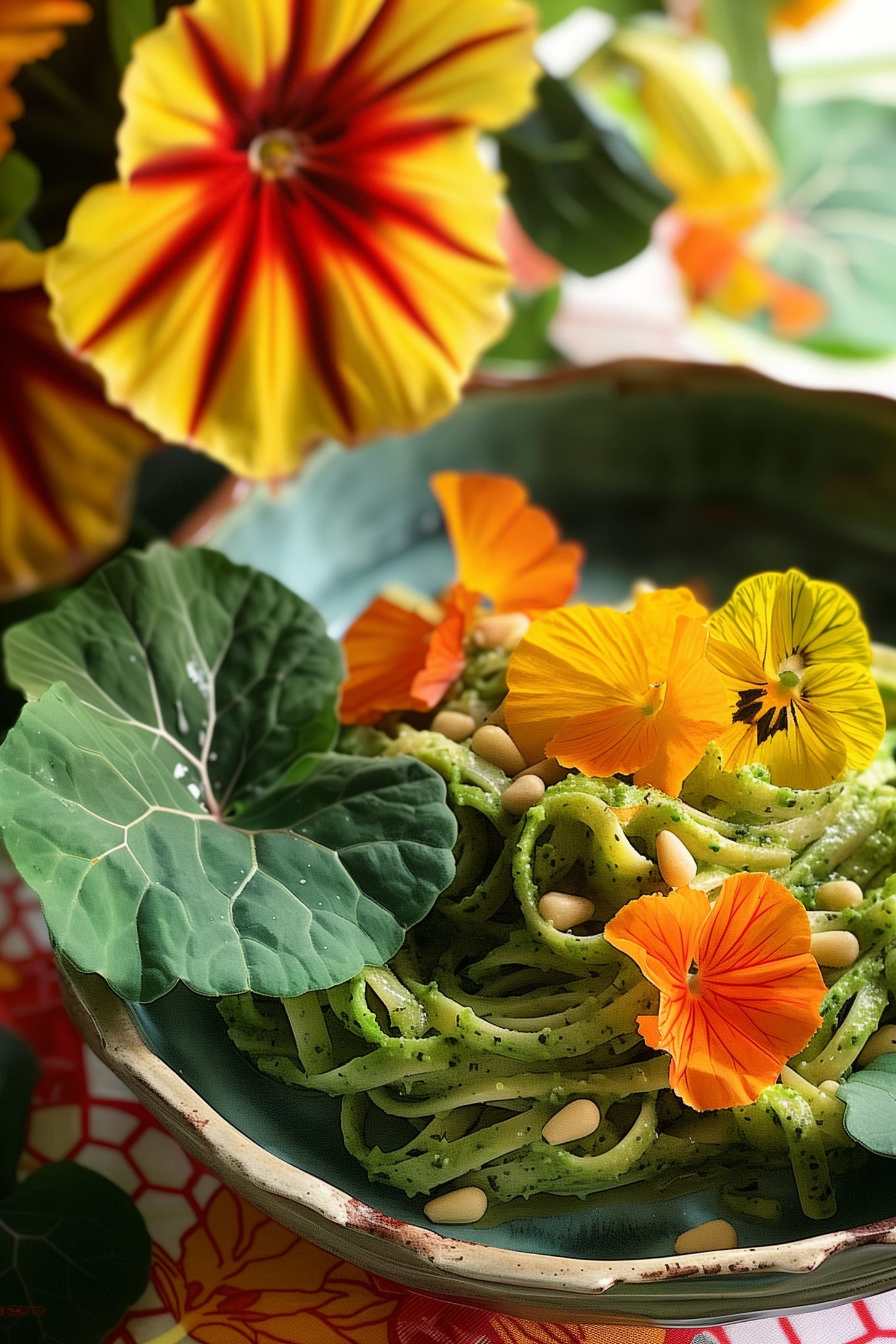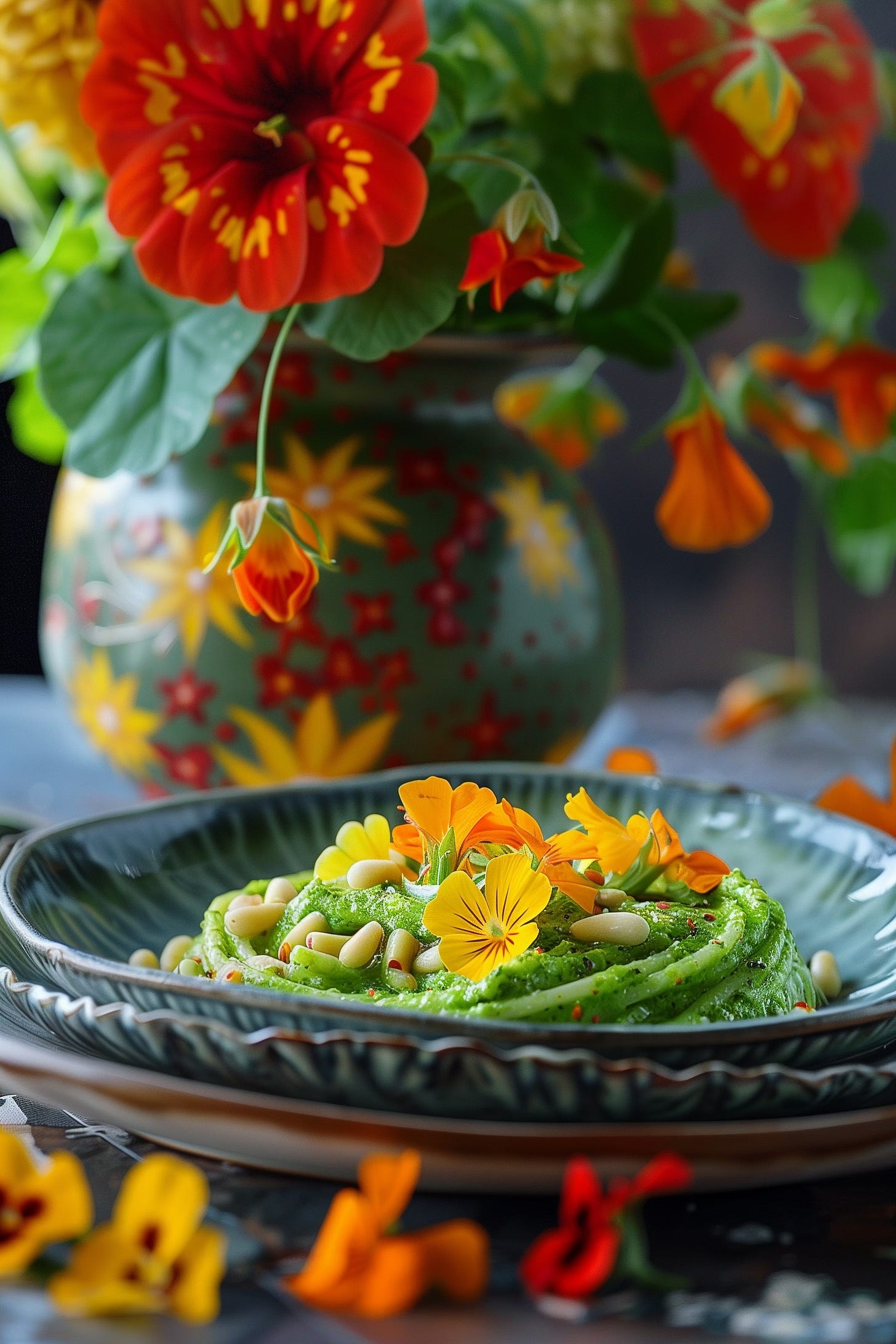Nasturtiums, with their vibrant blooms and peppery taste, are not only a delight to the eyes but also offer numerous health benefits. These versatile plants have a rich cultural and historical significance and can be used in various culinary dishes. In this guide, we will explore the health benefits of nasturtium, its cultural and historical significance, and provide a delicious recipe to incorporate this amazing plant into your diet.
Health Benefits of Nasturtium
Rich in Nutrients:
Nasturtiums are packed with vitamins A, C, and E, along with essential minerals such as iron, calcium, and manganese. These nutrients are vital for maintaining overall health and boosting the immune system.
Antibacterial and Antiviral Properties:
Nasturtium contains natural compounds that have been shown to possess antibacterial and antiviral properties. These properties make it useful for fighting infections and supporting respiratory health.
Anti-inflammatory Effects:
The plant has anti-inflammatory properties that can help reduce inflammation in the body, alleviating conditions such as arthritis and other inflammatory disorders.
Supports Digestive Health:
Nasturtiums can aid in digestion by stimulating the production of digestive enzymes. This can help improve nutrient absorption and promote a healthy digestive tract.
Detoxifying Properties:
The plant is known for its detoxifying effects, helping to cleanse the liver and kidneys. Regular consumption of nasturtium can assist in removing toxins from the body, promoting overall wellness.
Cultural and Historical Significance of Nasturtium
Historical Use in Medicine:
Historically, nasturtiums were used by indigenous peoples in South America for their medicinal properties. They were employed to treat wounds, respiratory issues, and infections.
Symbolism:
Nasturtiums symbolize patriotism and conquest, often associated with the bravery of warriors in battle. Their vibrant flowers were also thought to represent victory and celebration.
Culinary Tradition:
In various cultures, nasturtiums have been used in culinary practices for centuries. Their leaves, flowers, and seeds are all edible and add a unique, peppery flavor to dishes.
Gardening Popularity:
Due to their hardiness and ease of growth, nasturtiums became popular in Victorian gardens. They were often used in companion planting to repel pests and improve the health of other plants.
Modern Revival:
In contemporary times, nasturtiums have seen a revival in both culinary and medicinal uses. They are favored by chefs and herbalists alike for their versatility and health benefits.
Recipe: Nasturtium Pesto
Ingredients:
2 cups fresh nasturtium leaves
1 cup fresh basil leaves
1/2 cup nasturtium flowers
1/2 cup walnuts or pine nuts
2 cloves garlic
1/2 cup olive oil
1/2 cup grated Parmesan cheese (or vegan Parmesan for a dairy-free option)
Juice of 1 lemon
Salt and pepper to taste
Instructions:
Prepare the Ingredients:
Wash and dry the nasturtium leaves, basil leaves, and nasturtium flowers. Peel the garlic cloves.
Blend the Pesto:
In a food processor, combine the nasturtium leaves, basil leaves, nasturtium flowers, walnuts or pine nuts, and garlic. Pulse until the mixture is finely chopped.
Add Olive Oil and Cheese:
With the food processor running, slowly add the olive oil until the pesto reaches your desired consistency. Add the grated Parmesan cheese and lemon juice, then pulse to combine.
Season:
Season the pesto with salt and pepper to taste. Adjust the lemon juice and cheese to your preference.
Serve:
Serve the nasturtium pesto with pasta, as a spread on sandwiches, or as a dip for vegetables. Enjoy the unique, peppery flavor and the health benefits of nasturtiums!
Conclusion
Nasturtiums are a remarkable plant with a rich history and numerous health benefits. By incorporating nasturtium into your diet, you can enjoy its nutritional value and unique flavor. Whether used in traditional medicine, culinary dishes, or as a symbol of bravery and celebration, nasturtiums continue to be a valuable and versatile addition to our lives.










